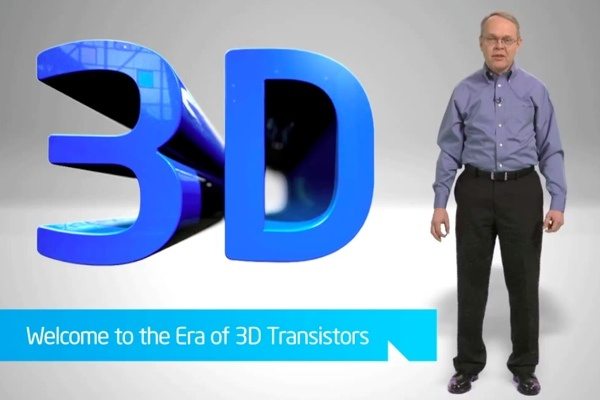Transistor is a very important electronic device which is used to amplify and switch signals. It was using 2D design since the invention, about 50 years ago. Now Intel introduces a revolutionary 3D Transistor design called Tri-Gate. This technology was first introduced by Intel in 2002 to high volume manufacture of 22-nanometer (nm) node in a chip named “Ivy Bridge.” The Three dimensional Tri-Gate transistors will replace the traditional planar two dimensional transistor structure that is used in today’s computers, mobiles and other electronics gadgets and devices.
Moor’s law describes a trend in the field of electronics. It says the long term trend in the history computer hardware, that the number of transistors that can be placed inexpensively in an Integrated Circuit doubles approximately every two years.
Intel’s 3D transistor enable chips to operate in low voltage and leakage with improved performance and energy efficiency. This features will provide the designers, the flexibility of designing transistors targeting at low power and high performance depending up on the needs.
Intel’s 22nm 3D Tri-Gate transistor gives up to 37 percent increase in performance at lower voltages than our traditional 32nm planar transistors and are consuming less than half power at the same performance of 2-D planar transistors on 32nm chips.
In Intel’s 3-D Tri-Gate transistors, the traditional flat two dimensional planar gate is replaced by a thin three dimensional silicon fin that rises up vertically from the substrate. Controlling of current is done by implementing gate on 3 sides of the fin, that is two on each side and one on top. The traditional 2D transistors uses only one gate on the top of the fin. These additional controls enables the transistor to conduct as much current possible in ON stage and approximately zero current in OFF state and it also enables the transistor to switch very quickly. This will make the transistors performance high and minimize the power consumption.
The new technology also provides an efficient way to manage package density. Since the fins are vertical in nature, transistors can be closely packed and thus it enhances Moor’s law. Designers have the ability to increase the heigh of fins to increase the performance and energy efficiency in future generations.
[youtube video_id=”YIkMaQJSyP8″ width=”880″ height=”495″]
The 3D transistor Tri-Gate technology will be implemented in upcoming Intel’s products. Intel also demonstrated the Worlds First 22nm microprocessor in the code named ‘Ivy Bridge’ working in a server, laptop and a desktop computer. Ivy Bridge-based Intel® Core™ family processors will be the World’s First high volume chip that uses 3D transistor Tri-Gate technology.
